Can Trump soften his image while selling himself as a fighter at the same time? His campaign's trying.
Plus: Harris borrows Republican border ad tropes for new spot
Hello, in this issue we’ll look at…
Harris borrows Republican border ad tropes for new spot
Can Trump soften his image while selling himself as a fighter at the same time? His campaign’s trying.
Somehow the first A.I. misinfo story of the Trump-Harris race is over something photographed by about 15,000 people from every angle
Scroll to the end to see: the political video that just turned 100 years old 🎥
Harris borrows Republican border ad tropes for new spot
Build the Walz?
An Associated Press-NORC poll released today found Vice President Kamala Harris leads former President Donald Trump when it comes to things like “committed to democracy” and “has the right vision for the country,” but she trails Trump on issues like immigration, which the poll found Trump leads 85% to 70%. A new ad seeks to close that gap.
In the 30-second “Tougher,” a male narrator introduces Harris as a “border-state prosecutor” who “spent decades fighting crime” and he details a campaign promise aimed at voters for whom border security is a top issue: Harris will hire thousands more border agents as president and crack down on fentanyl and human trafficking. “Fixing the border is tough, so is Kamala Harris,” the narrator says.
The ad, which the campaign has spent $1.56 million to air on TV in Arizona, Nevada, and six other states, uses imagery more common in Republican advertising, like shots of the U.S.-Mexico border wall and U.S. Border Patrol agents at work. It ends with the Harris-Walz logo over an image of law enforcement assembled to listen to Harris speak.
The ad is part of a larger message from Harris’ campaign attempting to turn a vulnerability into a strength. At a rally last week in Glendale, Ariz., she accused Trump of not being serious about making progress on border issues.
“He has no interest or desire to actually fix the problem,” Harris said, pointing to Trump’s call to Republican lawmakers to reject a bipartisan border security bill backed by Senate Republicans. “He talks a big game about border security, but he does not walk the walk.”
Sen. Chris Murphy (D-Conn.), who shared the ad, wrote on X that Democrats need to go on offense this year on immigration and border security. “There is no choice to be made between being the party of border security and being a party that celebrates legal immigration and lifts up immigrant communities,” he wrote.
Can Trump soften his image while selling himself as a fighter at the same time? His campaign’s trying.
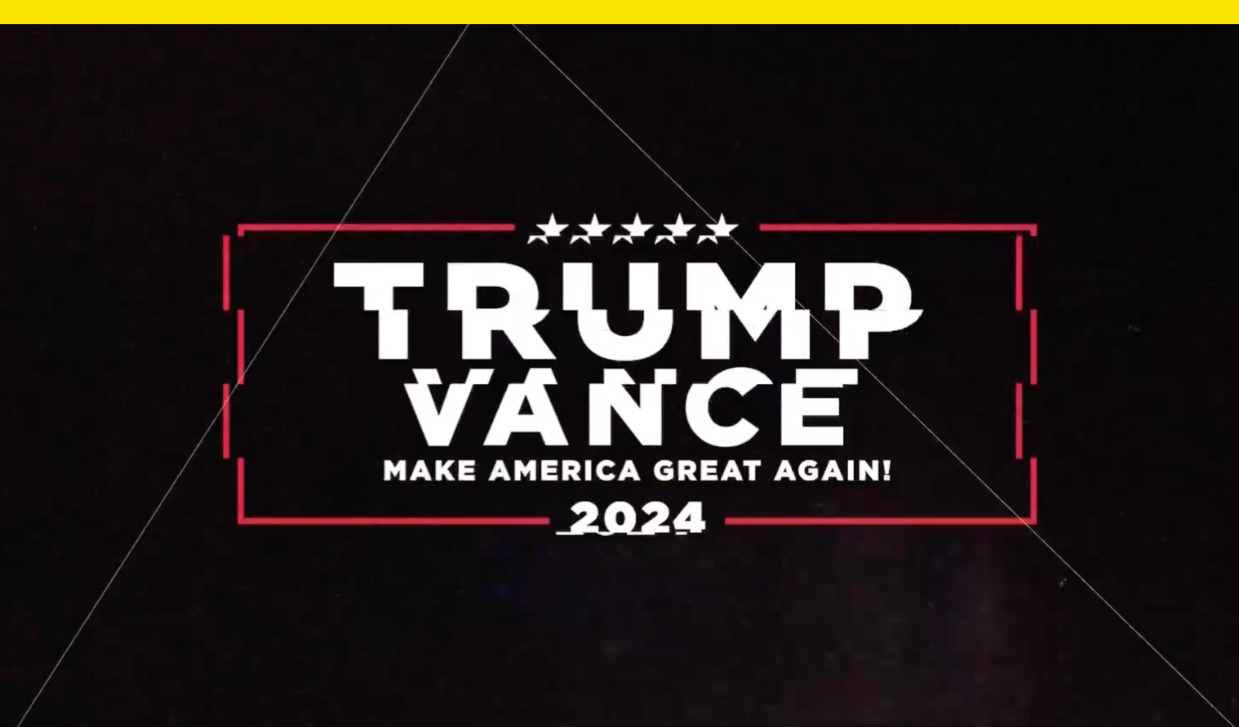
Trump’s return to X Monday gave voters their first look at his campaign messaging now that Harris is his Democratic opponent. The strategy? Soften his image while simultaneously playing up his profile as a patriot and fighter.
Trump posted seven video ads to his X account Monday, each with a link to either donate or volunteer. The first one uses clips from his 2016 campaign to cast his win as a triumph over the odds, and it’s followed by footage from the 2017 Inauguration, the FBI search of Mar-a-Lago, and news reports of his indictment.
This video is a genre of Trump video that leans into his role as an inspirational figure, something seen more commonly shared by business bros on social media than used in political persuasion. They use Trump audio in which he draws broader life lessons from his political struggles. “The more that a broken system tells you that you’re wrong the more certain you should be that you must keep pushing ahead,” Trump says in a voice over for the ad.
In another video, Trump speaks about standing up for your values and never quitting, while another video shows footage of him with his grandkids over a voice over from a male narrator speaking about “the test of a man.” The single time footage from the assassination attempt is used in the videos, it’s in a volunteer recruitment video for Trump Force 47, his get-out-the-vote initiative, and it’s set to orchestral music.
But not everything Trump posted Monday followed the same approach. An ad attacking Harris uses old interview footage to frame her as a “San Francisco radical,” while another that shows black-and-white footage of Trump walking down a hallway and staring down the camera with a voice over that seems more directed to his base. “We will demolish the deep state,” Trump says. “We will drive out the globalists, we will cast out the communists, marxists, and fascists.”
Trump hasn’t tweeted again since Monday even as he continues posting to Truth Social, suggesting that his own social network is his new, permanent online home. X remains for marketing purposes only, and what he’s posted so far shows the image his campaign hopes to project.
Somehow the first A.I. misinfo story of the Trump-Harris race is over something photographed by about 15,000 people from every angle
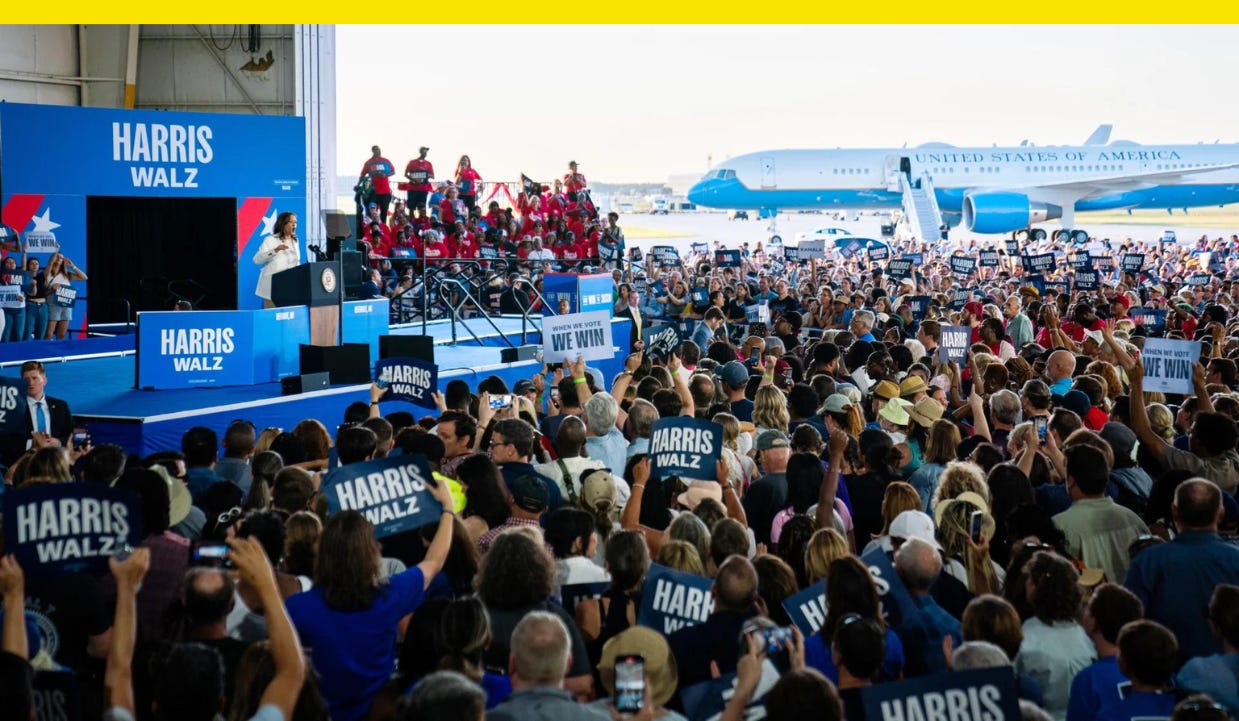
The race between Harris and Trump has its first controversy over misinformation.
But rather than faked images that push a false narrative, it’s a false narrative claiming real images are faked. After about 15,000 people attended Harris’ rally with her running mate Minnesota Gov. Tim Walz last week at an airplane hangar at Detroit Metro Airport, Trump falsely claimed on Truth Social Sunday that images from the rally were enhanced using generative A.I. to make the crowd seem larger than it really was. Or as Trump put it, “she ‘A.I.’d’ it.”
“Has anyone noticed that Kamala CHEATED at the airport?” Trump wrote in his Truth Social post. “There was nobody at the plane, and she ‘A.I.’d’ it, and showed a massive ‘crowd’ of so-called followers, BUT THEY DIDN’T EXIST!”
Trump shared an image of the Harris rally crowd on-site at the airport, with Air Force Two in the far background. A second image in the post, which zooms in on the side of the plane, does not appear to show the crowd’s reflection, which Trump and others pushing the false claim suggest is evidence that the photo was generated using A.I. However, photos from some of the 15,000 attendees at this same Detroit airport rally, as well as wire photos from agencies, disprove this assertion, documenting a crowd that fills the hangar and even spills outside of it. The plane reflection shows the hangar.
Trump’s post was reposted on Truth Social more than 11,000 times. On TikTok, some users have reposted the image as well as their own videos and photo galleries with images they claim prove the crowd for Harris wasn’t as large as it seems. One such post, which racked up more than 12 million views, also included an obviously faked crowd image sourced to a parody X account. The post was temporarily unavailable after I reached out to TikTok about it, it was later available again, and it has since been removed.
The ease of producing and disseminating A.I.-generated content is a new factor for misinformation this election year, and election officials are on high alert about the role it could play. Social networks have struggled to build and enforce effective mechanisms to combat misinformation on their platforms, with one study finding how Facebook’s efforts even backfired. Already, a faked robocall earlier in the year, claiming to be from President Joe Biden in New Hampshire, attempted to trick voters into not voting in the New Hampshire primary.
TikTok wasn’t nearly as popular back in 2020 as it is in the current presidential cycle. We’re quickly learning that its UX, which rewards rapid-fire trend repetition and has been key to its success, often moves too fast to be fact-checked by experts. And it’s hard to say whether the fact-check would get the same visibility, anyway. The challenge is quantifying what the effect of viewing a video like this might have on voters.
Meanwhile, TikTok’s guidelines specifically prohibit “misinformation or content about civic and electoral processes that may result in voter interference, disrupt the peaceful transfer of power, or lead to off-platform violence.” TikTok did not respond to a request for comment.
While something as cosmetic as crowd size might not seem to rise to the level of discouraging people from voting or disrupting the peaceful transfer of power, Trump, the first former U.S. president to be convicted of felony crimes, connected his A.I. accusation to false claims of election interference. Calling for Harris to be disqualified, Trump’s post showed how quickly viral misinformation can rise from meme to election-interference pronouncements from the Republican nominee himself.
“She should be disqualified because the creation of a fake image is ELECTION INTERFERENCE,” Trump wrote in his post. “This is the way the Democrats win Elections, by CHEATING – And they’re even worse at the Ballot Box.”
Crowd size is a sensitive subject for Trump, who just last week compared his rally crowd size to the crowd at Martin Luther King Jr.’s “I Have a Dream” speech. Trump also spent the opening days of his administration embroiled in a controversy about the crowd size at his inauguration in 2017. Comparisons with former President Barack Obama’s inauguration crowd size went viral, and records reviewed by The Guardian found that Trump called the acting director of the National Park Service the morning after he took office and a government photographer cropped out empty spaces on the National Mall in the official photos of the inauguration to make the crowd appear to have been larger.
For its part, though, the Harris campaign doesn’t seem to be taking Trump’s false claims very seriously. Instead, it’s trolling back.
On the @KamalaHQ account on Truth Social, the campaign has posted side-by-side comparisons of Harris’s rallies with Trump’s in the same cities, while on a video showing the Detroit crowd, the campaign account wrote, “Warning: The content of this video may upset @realDonaldTrump.”
Have you seen this?
Why 2024 feels like the first post-Twitter presidential campaign. Old media don’t vanish, as proven by the continued existence of cable news, talk radio, and printed newspapers and newsmagazines, all of which still play a role in how we experience politics. X may be settling into a similar equilibrium. [Fast Company]
Tim Walz is making casual wear a political boon. With his flannel-lined LL Bean barn coats, scuffed work boots, and woodsy camo caps, Walz is one of the few male politicians who looks normal in the kind of unpretentious clothing many voters prefer to wear themselves. [Politico]
FEC won’t act on A.I. in election ads this year. The decision likely means this election will continue to rely on voluntary actions by tech companies, since Congress is still trying to figure out what to do about A.I. in elections. [Axios]
Instagram failed to act on 93% of abusive comments aimed at female politicians, study finds. The Center for Countering Digital Hate said in a report that Instagram wasn't consistently enforcing its rules against abuse, including sexist or violent replies to women in office. [NBC News]
The Harris-Walz camo hat is suddenly 2024’s hottest merch. The campaign’s initial run of 3,000 hats sold out within 30 minutes, according to the campaign. [Yello]
History of political design
“President Coolidge Taken on the White House Grounds” (1924). While Dwight Eisenhower’s professionally filmed commercials 28 years later for the 1952 campaign are the first official presidential campaign TV spot ads, the 1924 newsreel Calvin Coolidge appeared in marked a major advancement in campaign communications. Filmed 100 years ago this weekend, Coolidge participated “very reluctantly,” according to the Library of Congress.
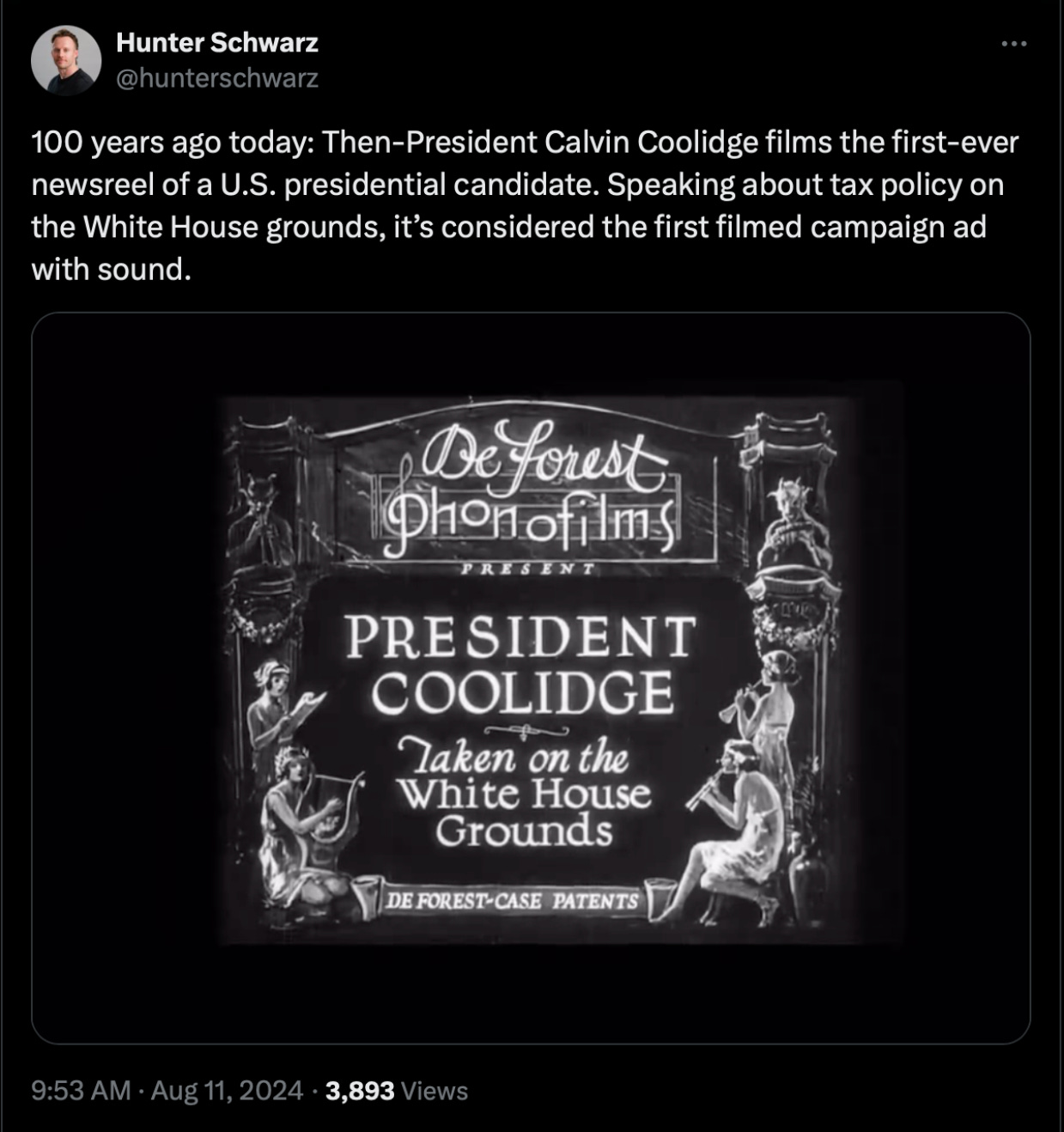
A portion of this newsletter was first published in Fast Company.
Like what you see? Subscribe for more:

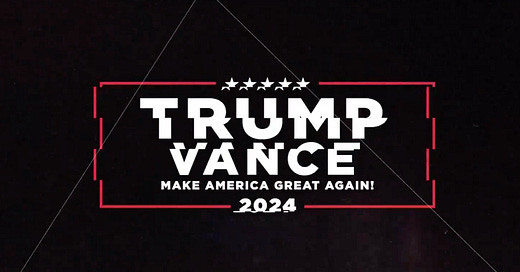


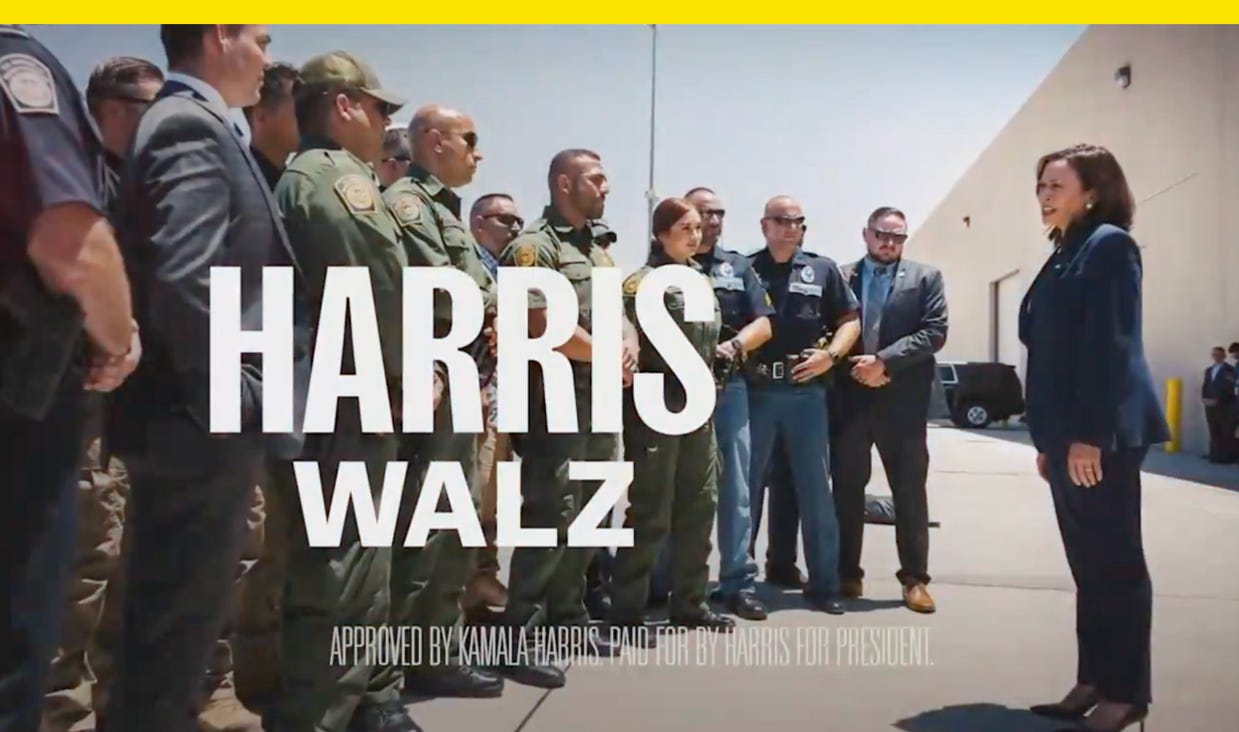
Must say, your newsletter is eagerly expected in my corner of the internet. Thank you for the analysis and the entertaining way of showcasing facts.